SLC S21 Week 3 - Herbal Medicine in the Kitchen
4 comments

Recipe Creation: Create a meal or recipe using at least 3 herbs which are commonly found in your area and explain the health benefits of each herb in the recipe.
Herbs are the leafy parts of a plant that can be used in a variety of ways. I live in Delhi region of India where they are commonly used in cooking or can be used fresh or dried.
There are various herbs commonly available in my area, and we have several of them, spices, available in our kitchen that fall into the category of herbs. I would like to mention here that my wife, who considers herself the kitchen queen and generally does not allow me to enter the kitchen, but I am an expert in cooking, and I have cooked food myself in the absence of my wife or like she was hospitalized for the last one month.
Herbs are a great way to add flavor and color to any food dish or drink, be it sweet or savory, without adding fat, salt, or sugar. Apart from flavor and color, each of them has its own set of healthy properties too.
From my experience, I can say that any part of a herbal plant that can be dried is a spice. And as we all know, South Asia, especially India, where Vasco De Gama came because of these spices. Let me give you some examples of spices like ginger, cinnamon, black pepper, cumin, turmeric, cloves, and saffron.
In general, fresh herbs have a delicate flavor, so if you're adding them to your food, do so in the last few minutes so they don't lose their medicinal values.
You'll know if you've added enough herbs by tasting your dish. Herbs and spices make a difference to the taste of the dish, but mind it, overusing these will ruin the taste of your dish, so one must know what exact quantity should be used in a dish.
I will share how to prepare a healthy dish here by using at least three of them for the benefit of Steemians.
Palak (Spinach) Dal Recipe
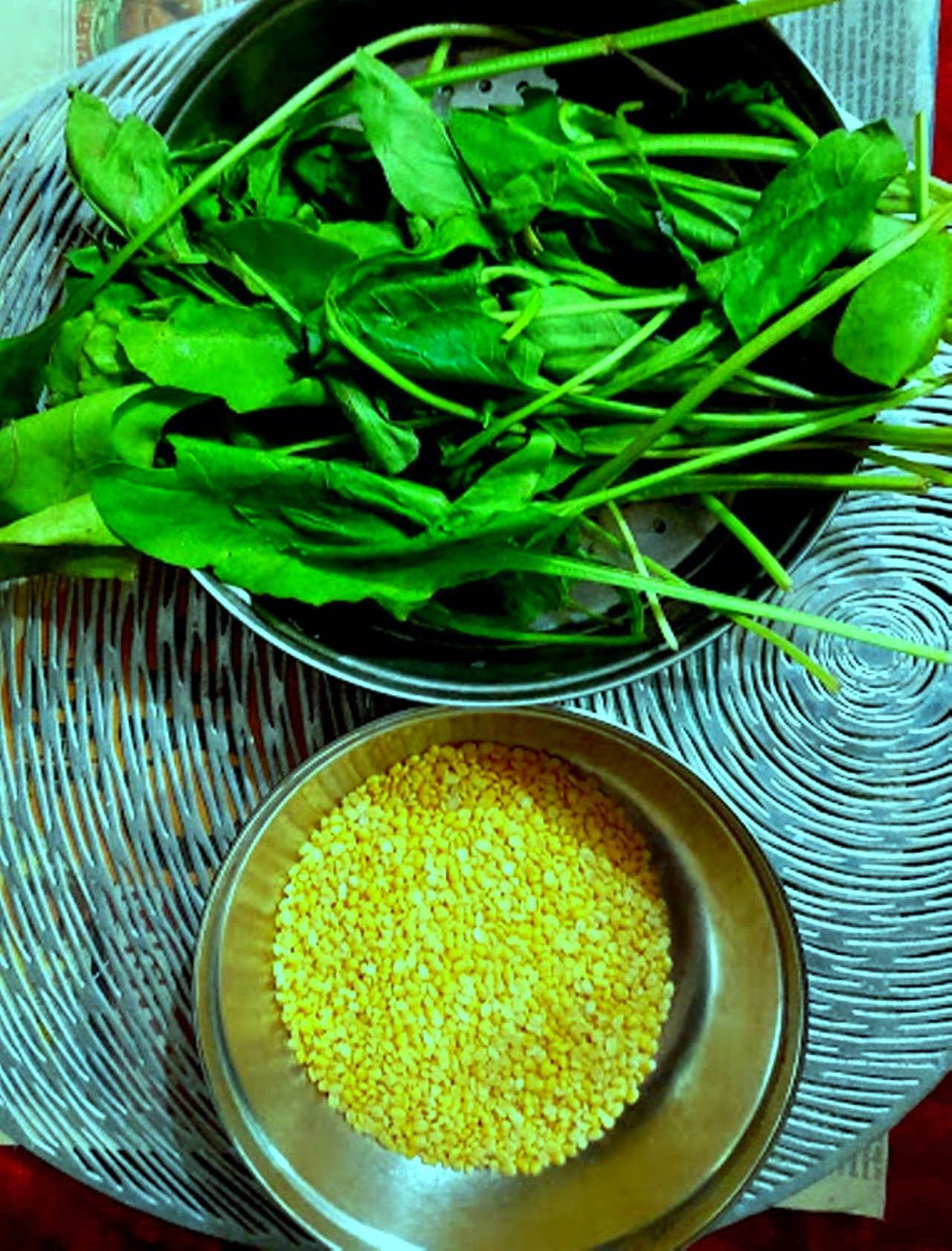
The taste of fresh spinach is something else, and since fresh spinach is used in this dish, it is very easy to make. It is made in almost all homes in North India, as it's not only tasty but it has health benefits too.
Ingredients for two people:
1 cup moong daal
1 chopped onion
2 chopped tomatoes
1 green chilli
1/2 spoon ginger
2 spoons finely chopped garlic
1 spoon turmeric powder
2 spoons oil
Salt as per your taste
For seasoning-
1 spoon ghee or oil
1/2 spoon cumin seeds
1 pinch asafoetida
1 dried red chilli
1/4 spoon of chili powder
To make spinach daal, first of all, I wash moong daal 2 to 3 times in water and let it soak in water for 20 minutes.
Now I put it in a pressure cooker with water, salt, and turmeric powder as per the requirement and cook it till 2 to 3 whistles.
Now I take spinach, and after washing it properly, I chop it fine and keep it aside.
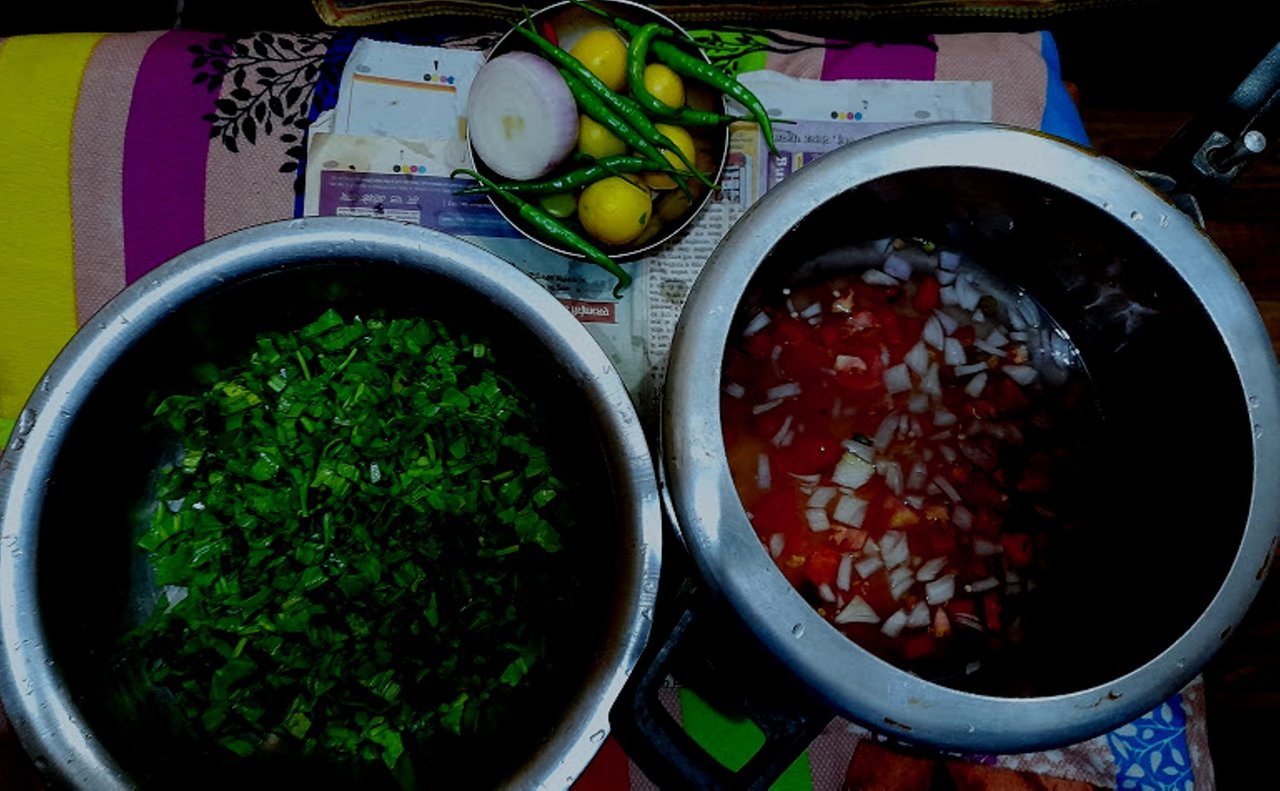
Now I put 1 spoon of ghee and 1/2 spoon oil in a pan and add cumin seeds and cook for 10 seconds. Now I add garlic and ginger and let it cook for 1 minute.
After 1 minute, I put the onion and green chilli in it and cook till the onion becomes soft and brown. Now I add finely chopped tomatoes and cook till they become soft, and after they become soft, I add spinach and cook.
After they are cooked properly, I add turmeric powder, red chili powder, and salt and let it cook for 1 more minute.
After 1 minute, I add already boiled lentils to this roasted mixture and let it cook in a pan for 4 to 5 minutes. Turn off the gas and keep it aside.
Now it's time for tempering, so I heat oil in a small pan and add mustard seeds and fry for 10 seconds, and let the remaining garlic cook till it turns golden.
Now it's time to add asafoetida and dried chilies; then I let them cook for 20 seconds, and finally add them to the dal and turn off the gas.
I have eaten this dal palak in my home by preparing it in this style, but during my stay in Kashmir, I have also eaten it for lunch with sev tomato ki sabzi and rumali roti.
Health Benefit: This preparation increases iron, protein, and immunity.
Research Seasoning Health Benefits: Pick any two seasonings and research their health benefits. Write a short paragraph on each, covering how they can benefit your health when included in meals.
As I said in the beginning, the herbs found in our area, especially the leafy parts, which can be used fresh or dried, are used in cooking, and as medicines are available plentiful.
I can mention some of them here, for example, cinnamon, cumin, turmeric, cloves, and saffron, which is also available in north India.
I don't think anyone should have any doubts that herbs are a way to add flavor and have plenty of health benefits, but I can't say the same about Westerners who do not use all the spices and herbs, barring black pepper, cloves, and ginger. However, we consider these herbs to add flavor, and color, and also have their own set of health benefits.
We generally add fresh as well as dried herbs to our cooking, especially as we are so used to adding them to our food that if we don't add herbs to our food, the flavor of the dish will taste different, and we feel as if we missed on healthy ingredients.
However, you have asked for two seasonings and their benefits in this part of the homework.
I have said a lot about flavor and health benefits so far but seasoning is different it involves adding ingredients like garlic or onion to change the taste of the food. Seasoning is mostly done at the end of the cooking with the right ingredients and to get a proper balance of flavor.
As per common belief, fresh herbs contain higher antioxidant levels compared to processed or dried herbs.
Seasoning is the process of improving the taste of any food by adding spices to it and is based on the concept that food becomes more delicious as it gets cooked for the right time so it doesn't get overcooked and become tasteless. We, the Asians, are perhaps the most experts in this art of seasoning, with my due apologies to people living on other continents.
Research spice health benefits: Choose any two spices
Herbalists recommend using spices like cinnamon to enhance flavor instead of using sugar and other spices. According to them, most patients who have high sugar intake may contribute to diabetes, heart disease, and other serious diseases.
For people suffering from diabetes, cinnamon may help reduce blood glucose and measures of immune resistance. I am not an herbalist or dietitian, but I can tell you that no herb works its magic overnight, but good results can be seen after at least three months. As far as I can guess, the use of cinnamon can control blood pressure and open up blood vessels, which can improve blood flow to the heart, so it may prove effective.
Cloves
The use of cloves can benefit from arthritis, iodine-rich stress, and eye health.
Cloves can be used as an important seasoning ingradiant that provides warmth and flavor to a variety of spices. Used for years in Asian herbal or natural medicine, cloves have many health benefits. In my first homework, I probably mentioned a component called eugenol in cloves, which acts as a natural antioxidant in itself.
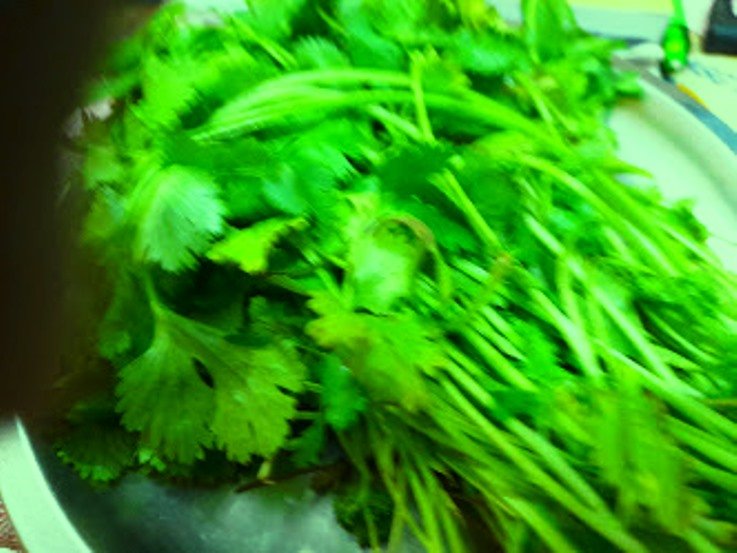
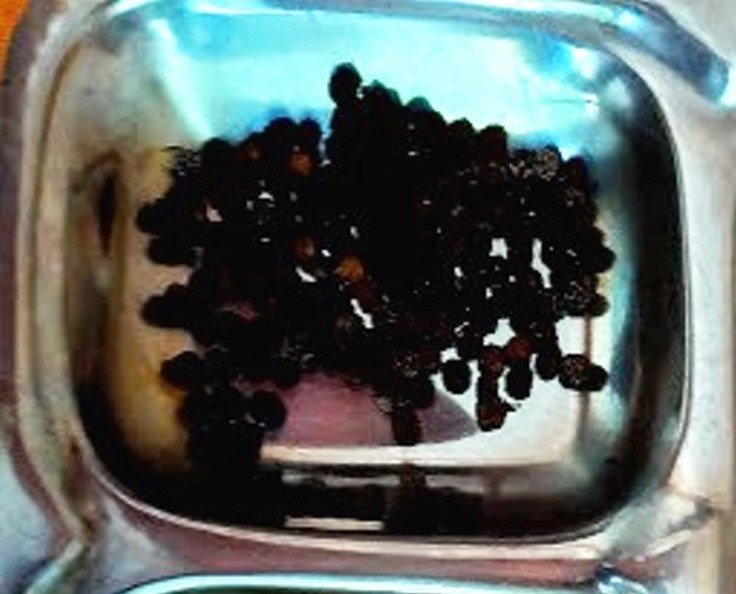
If we follow the advice of herbalists and dieticians, cloves are also a source of beta-carotene, which is an important nutrient for keeping our eyes healthy.
Coriander
The use of coriander can protect you from optimization gradient cancer, but you should use it with the advice of your doctor. According to some herbalists, the coriander plant is a more powerful antioxidant than vitamin C. And we all know that coriander is an important ingredient in seasoning.
Herb Identification Challenge: Identify five herbs at a local grocery store or farmer's market, taking photos and writing down their uses, along with how they could be incorporated into cooking.
I can name several herbs and spices with different vitamins, minerals, and antioxidants. These herbs and several others are used as antioxidants, especially cloves, cinnamon, neem, ginger, lemon, etc. in our parts of the world.
For instance:

Ginger: Ginger is considered as a medicine for treating stomach problems, nausea, diarrhea, cholera, toothache, bleeding, and arthritis. Ask any herbalists who will suggest using this herb to treat various respiratory diseases including colds and coughs.<div
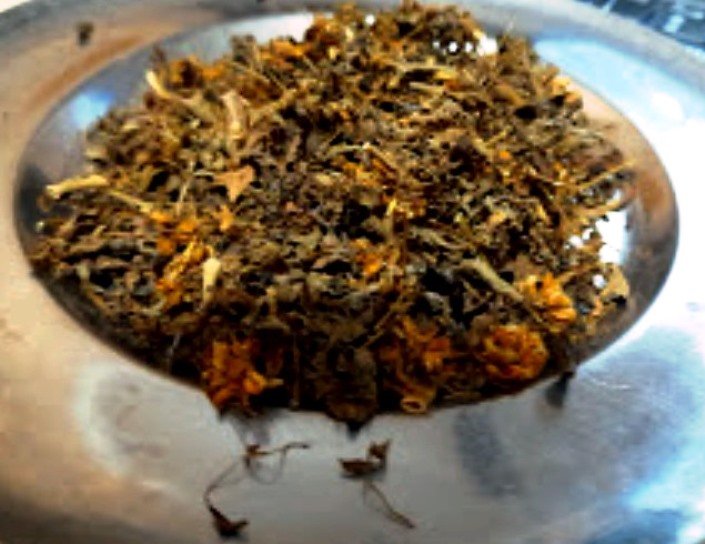
Fenugreek: Fenugreek can help control blood sugar. Benefits of eating fenugreek can be beneficial from enhancing the taste of food to maintaining health. Fenugreek leaves known as a dry herb are mostly used to add flavor to food and enhance the aroma of food.
It is especially used in Punjabi recipes. But that's not all, its regular consumption also removes different health risks. Fenugreek is full of Calcium and iron, one of the essential elements for our body. Fenugreek contains low carbs.
Curry leaves: Eating curry leaves not only enhances the taste of food, but this leaf is rich in many nutrients like vitamins, minerals and antioxidants, which are beneficial for our health in many ways.
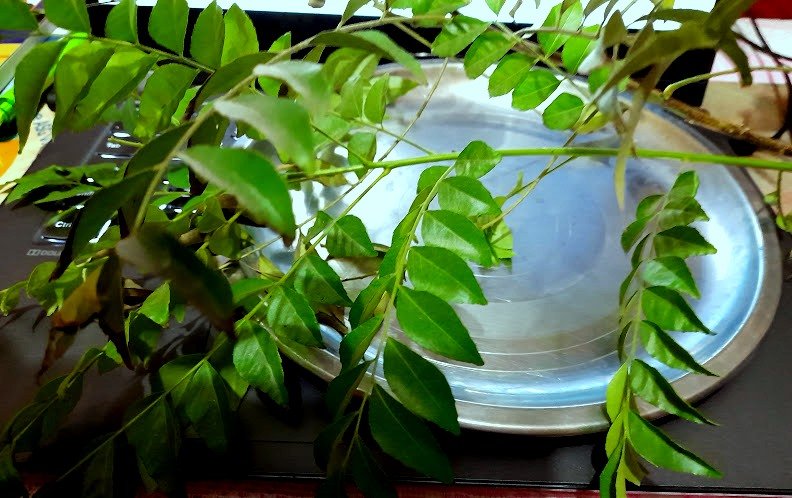
Apart from this, curry leaves also contain minerals like calcium, phosphorus, iron, magnesium, potassium and zinc. All these minerals are important for bones, teeth, and muscles.
Curry leaves also contain antioxidants, such as quercetin, beta-carotene and lutein, which balance the stress hormones in the body. It helps lower cholesterol, hypertension, and diabetes, besides common coughs and colds.
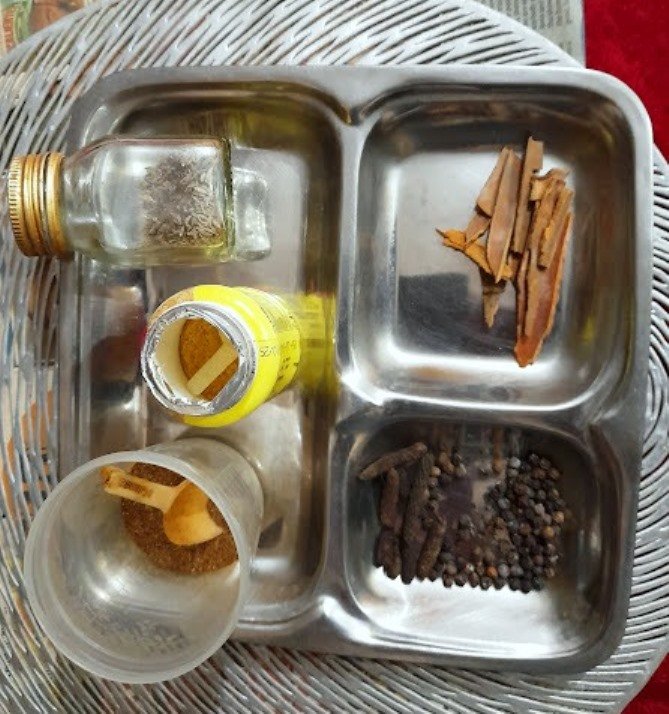
Cinnamon: Cinnamon is considered a spice. It is brown in color, soft and smooth, and has a strong pleasant smell. However, if we believe the herbalists we can treat various diseases by using cinnamon.
For instance, disorders of the digestive system, toothache, headaches, skin diseases, and menstrual problems are some of the diseases we can get rid of if we know the proper use of cinnamon. Apart from these, we can cure diarrhea and TB if we know the proper method.
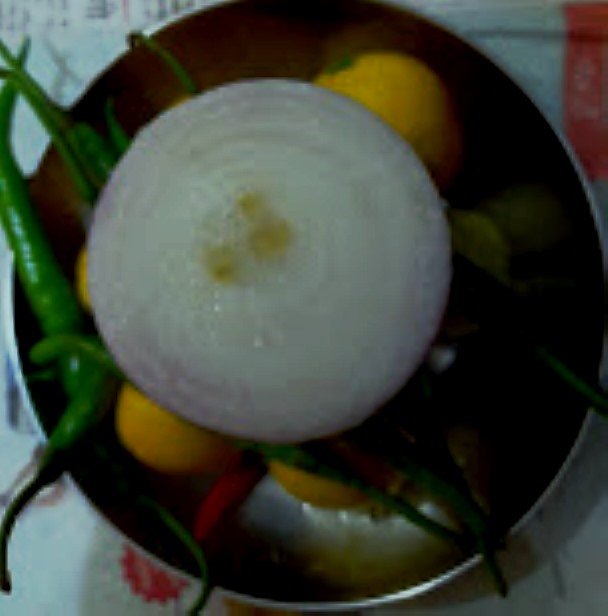
Onions : Onion is an important part of almost every Indian kitchen. We use it as a vegetable as well as salads. Our dishes are incomplete without onions but eating raw onions has its own health benefits.
Raw onion is very beneficial for health. Including it in the diet can give you many benefits. If you eat raw onion daily, then it protects you from many diseases and you can control blood sugar levels.
Raw onions are rich in vitamin C, which works to strengthen your immunity. Onions help in controlling blood pressure. Along with this, they also help in improving heart health by controlling cholesterol levels. Essential nutrients like vitamin C, B6, folate and potassium are found in raw onions.
Detox Medicine:
Prepare a herbal detox medicine and tell step by step process and how it helps to detoxify the body?
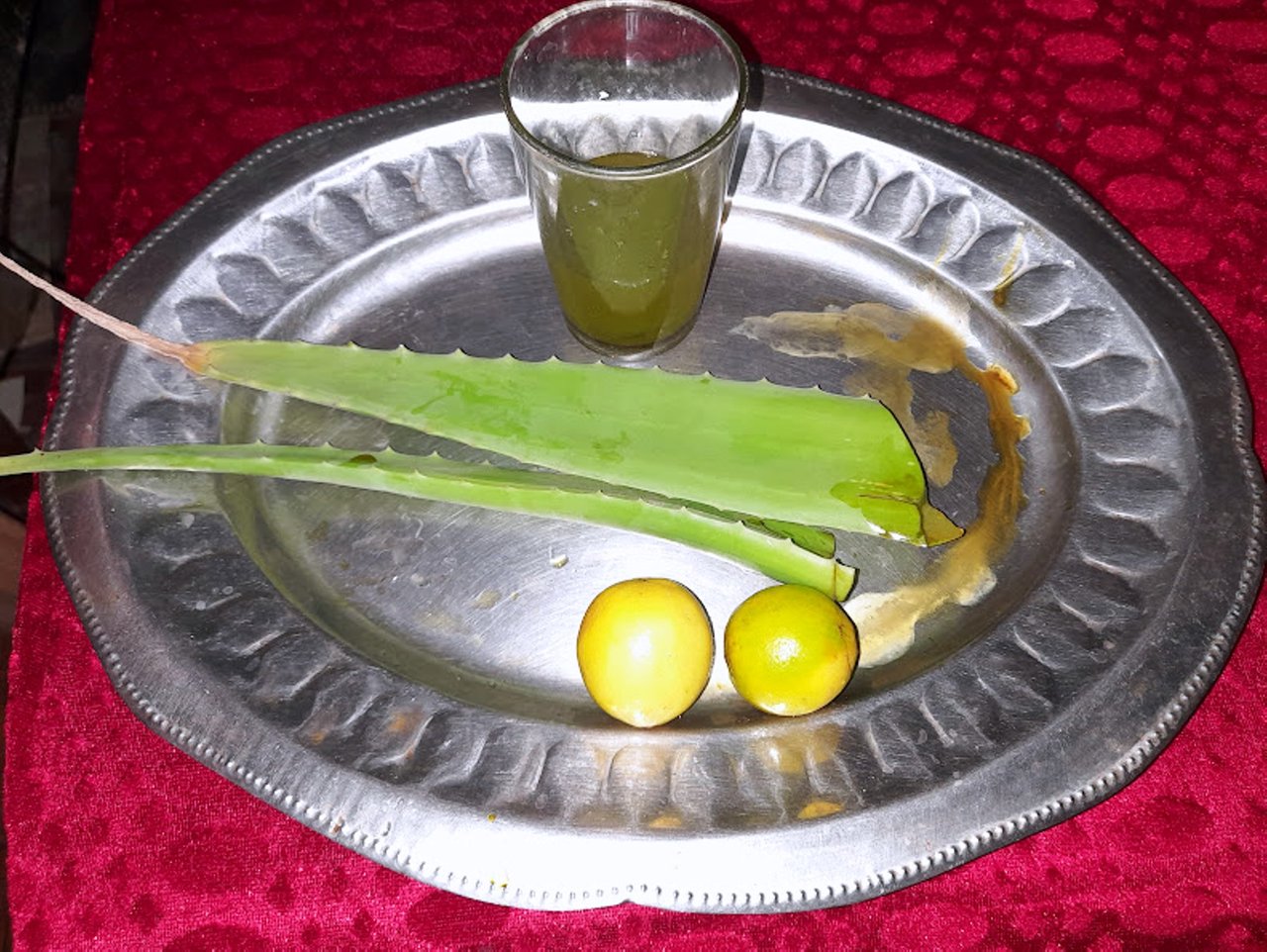
With our wrong lifestyle and wrong eating habits, we often fall prey to different physical problems; therefore, we need to keep our bodies healthy. We can detox by consuming aloe vera. I will tell you how aloe vera can be useful for detoxing your body by preparing juice of aloe vera.
Note: All these items are available in my kitchen, garden, or the park outside my house.
Aloe vera for whole-body detox
Even if you do not like drinking Aloe Vera juice in terms of taste, it is found in almost every house, which is no less than a boon for health.
Aloe vera juice is very beneficial for health.
Healthy skin by consuming aloe vera juice.
Aloe vera juice improves our digestive system.
Including aloe vera juice in the daily diet can also help in burning fat.
Aloe vera is a medicine that has many benefits. It contains a lot of vitamins, minerals, and antioxidants, which are beneficial for the body and health in many ways. This is the reason why it is also called a miracle plant. It contains fiber, sodium, potassium, magnesium, copper, and zinc, along with vitamins A, C, and E, and traces of vitamin B12 and beta-carotene.
Aloe vera also helps in controlling diabetes by controlling blood sugar levels along with dental health.
Skin Health
Consuming aloe vera juice removes acne and cleanses the skin, giving it a glow.
Aloe vera pulp acts as a moisturizer for the skin and also relieves sunburn.
Anti-aging properties
Aloe vera juice helps in producing collagen, which reduces wrinkles on the skin. In this way, it acts as an excellent anti-aging agent.
If aloe vera gel is added to the diet in the form of juice, then your liver can be detoxed with it. We can mix aloe vera gel and amla juice in a glass of water and consume it on an empty stomach in the morning. By doing this, the toxins accumulated in the liver can be easily removed.
The pulp of aloe vera gel is also useful in detoxifying the liver. If you do not have time to make juice, then remove the skin of aloe vera and eat its pulp. This can remove the toxins from your body.
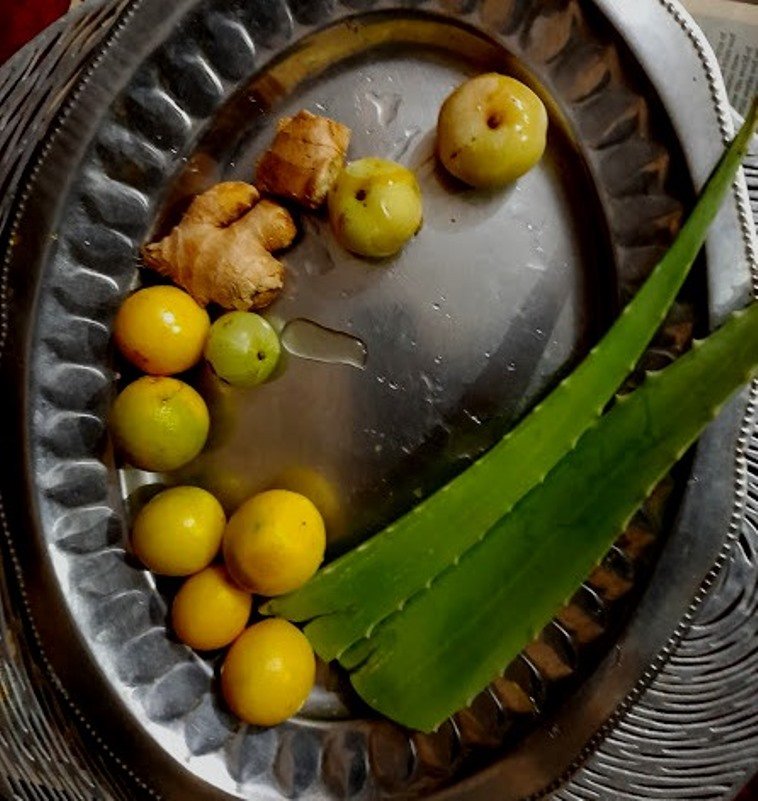
You can also add aloe vera juice to your diet. The pulp of aloe vera, lemon juice, and Indian gooseberry can help detox your body fast. Apart from this, aloe vera juice can also prove useful in strengthening the liver.
If you use aloe vera juice regularly on your body, including your face and hair, your hair and skin remain healthy for a longer period. In our area, Patanjali's founder, Ramdev tells the benefits of aloe vera juice by drinking 30 ml of juice three times a day, either empty stomach or with food.

Comments